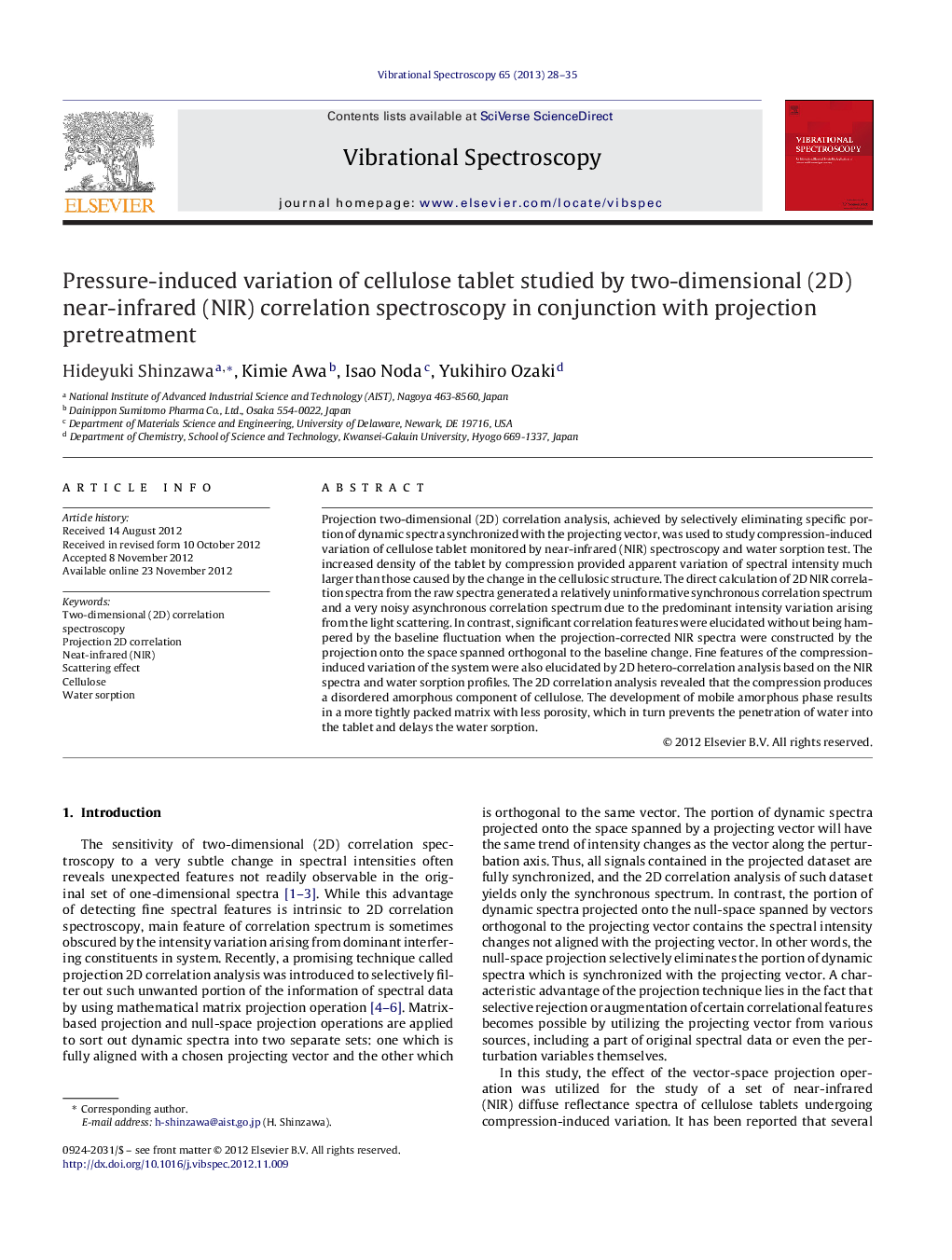| Article ID | Journal | Published Year | Pages | File Type |
|---|---|---|---|---|
| 1251890 | Vibrational Spectroscopy | 2013 | 8 Pages |
Projection two-dimensional (2D) correlation analysis, achieved by selectively eliminating specific portion of dynamic spectra synchronized with the projecting vector, was used to study compression-induced variation of cellulose tablet monitored by near-infrared (NIR) spectroscopy and water sorption test. The increased density of the tablet by compression provided apparent variation of spectral intensity much larger than those caused by the change in the cellulosic structure. The direct calculation of 2D NIR correlation spectra from the raw spectra generated a relatively uninformative synchronous correlation spectrum and a very noisy asynchronous correlation spectrum due to the predominant intensity variation arising from the light scattering. In contrast, significant correlation features were elucidated without being hampered by the baseline fluctuation when the projection-corrected NIR spectra were constructed by the projection onto the space spanned orthogonal to the baseline change. Fine features of the compression-induced variation of the system were also elucidated by 2D hetero-correlation analysis based on the NIR spectra and water sorption profiles. The 2D correlation analysis revealed that the compression produces a disordered amorphous component of cellulose. The development of mobile amorphous phase results in a more tightly packed matrix with less porosity, which in turn prevents the penetration of water into the tablet and delays the water sorption.
